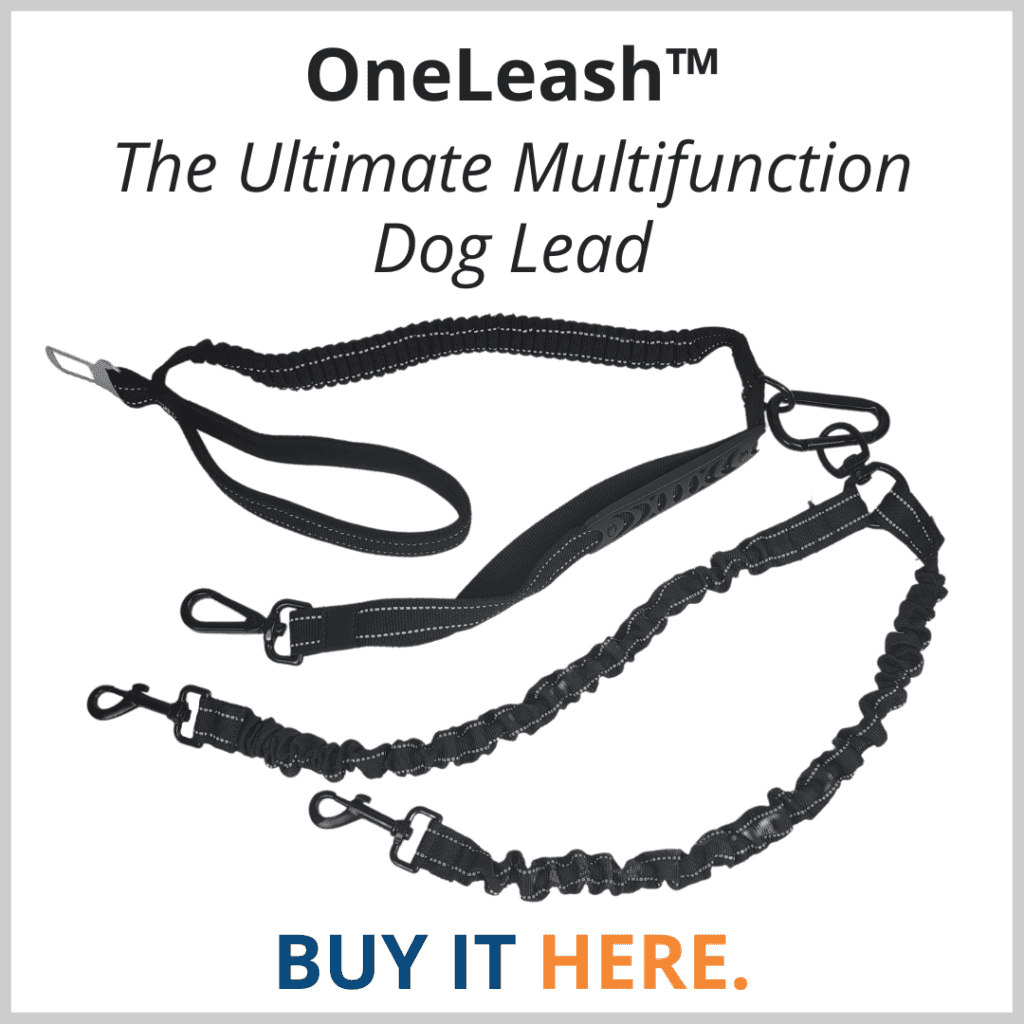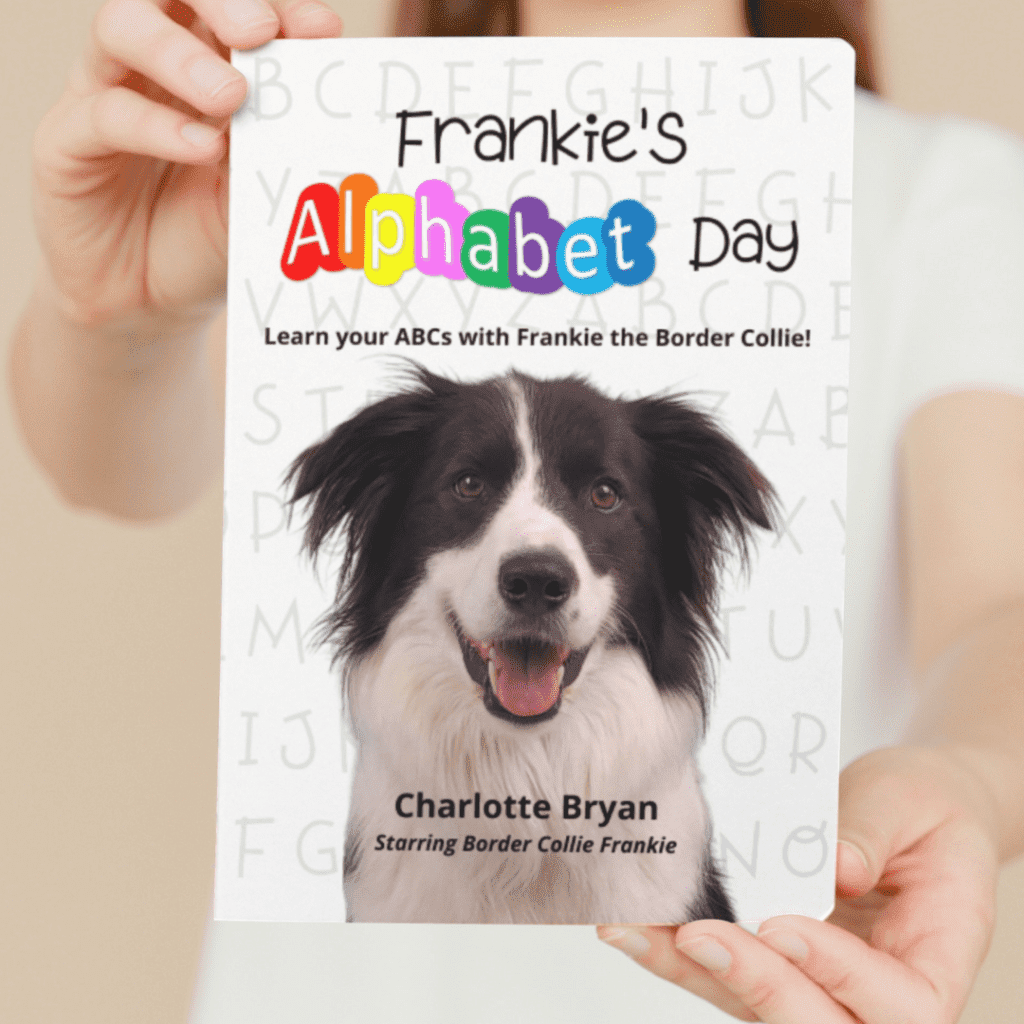Discover the Exciting World of Dog Agility: A Complete Guide
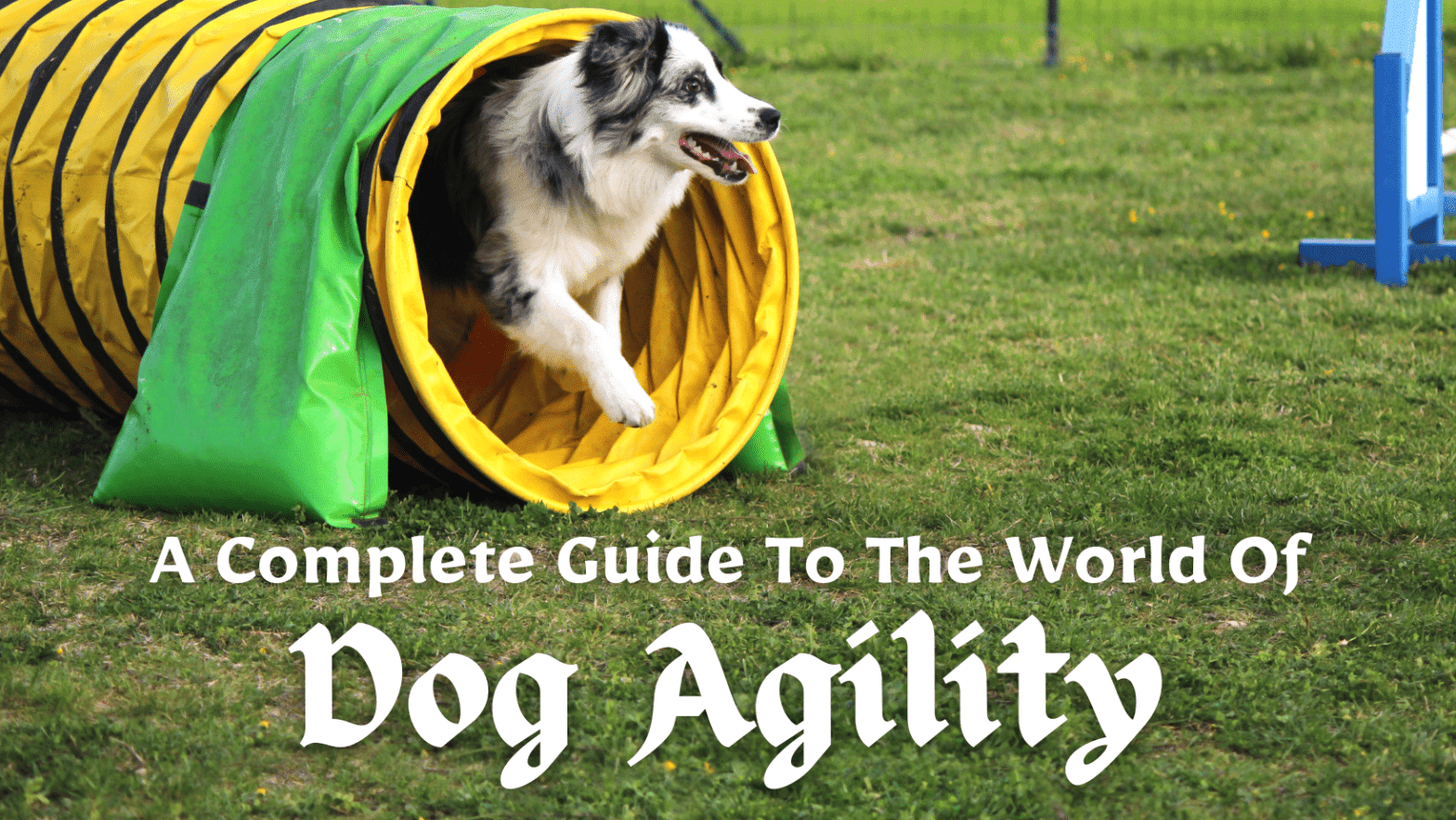
Charlotte Bryan
Published On Jan 21,2023
If you’re reading this, chances are you’re interested in learning more about the exciting and fun-filled sport of dog agility. Whether you’re just starting out or have done a few lessons, we’re here to provide you with all the information and resources you need to get started and excel in the world of dog agility.
Table of Contents
ToggleDog agility is a sport in which dogs and their handlers navigate a course of obstacles such as jumps, tunnels, and weave poles. The aim of the sport is for the dog to complete the course as quickly and accurately as possible. It’s a great way to bond with your dog, improve their fitness and obedience, and have fun together.
In this article, we’ll cover everything from the basics of dog agility to choosing a dog agility trainer, as well as other tips and advice.
We’re excited to share our passion for dog agility with you, and we hope that you’ll find this blog post to be a valuable resource as you and your dog embark on this exciting journey. So, let’s get started!
Jump To:
What is dog agility?
What are some of the obstacles in dog agility?
Why should you participate in agility with your dog? What are the benefits to your dog?
What are the benefits to the handler?
Can anyone participate in agility with their dog?
Are male or female dogs better at agility?
Can any breed do agility?
What is the best dog breed for agility?
What to look for in a dog agility trainer?
What Is Dog Agility?
Dog agility is a popular and growing sport in Australia, where dogs and their handlers navigate a course of obstacles such as jumps, tunnels, and weave poles. The aim of the sport is for the dog to complete the course as quickly and accurately as possible. Dog agility competitions are held throughout Australia, with events organized by various clubs and organizations. The sport is open to all breeds of dogs and handlers of all ages and skill levels. Dog agility is not only a fun and exciting activity for dogs and their owners, but it also helps to build a strong bond between the two and improves the dog’s physical fitness and obedience.
What Are Some Of The Obstacles In Dog Agility?
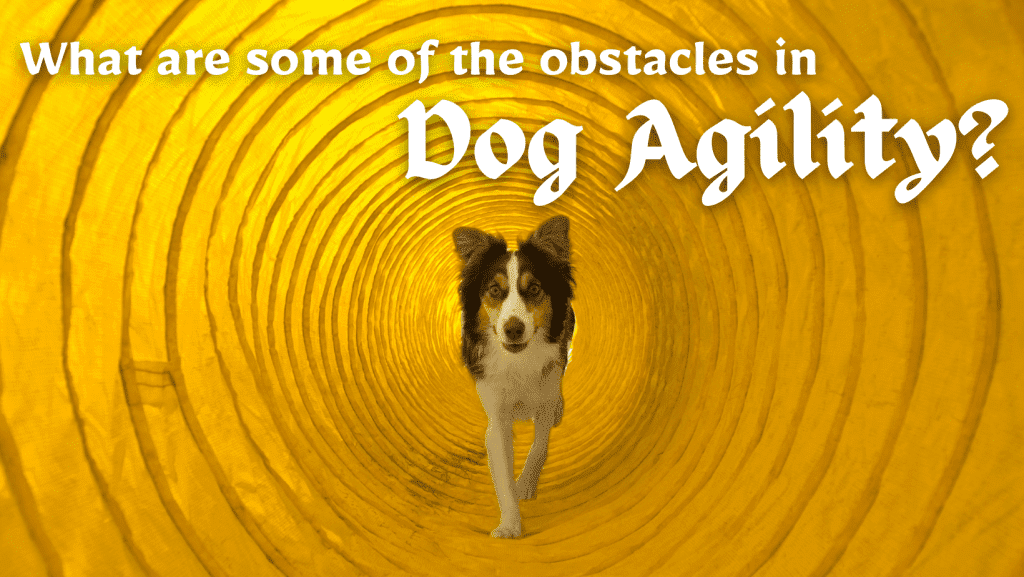
In dog agility, dogs navigate a course of obstacles, which can include:
- Jumps: These can be in the form of single bars, double bars, triple bars, or a combination of different types. The jumps can be adjusted to different heights based on the size and breed of the dog.
- Tunnels: These are long, cylindrical obstacles that the dog must enter and exit. They can be made of fabric or plastic and can be straight or curved.
- Weave Poles: These are a series of upright poles that the dog must weave in and out of in a specific pattern.
- A-Frame: This is an obstacle that is shaped like the letter “A” and the dog must climb up one side and down the other.
- See-saw: This is a teeter-totter obstacle that the dog must walk across, causing it to tilt up and down.
- Dogwalk: This is a narrow plank that the dog must walk along, with a drop off on either side.
- Contact obstacles: these include the A-frame, dogwalk and seesaw. These obstacles have a yellow or painted contact zone that the dog must touch with at least one paw before continuing on the course
- Teeter totter : These are balance beam that the dog must go up and down, again with a painted contact zone for the dog to touch with at least one paw.
These obstacles are set up in various combinations to create a course, which the dog and its handler must navigate in a specific order and within a certain time limit.
Why Should You Participate In Dog Agility With Your Dog? What Are The Benefits To Your Dog?
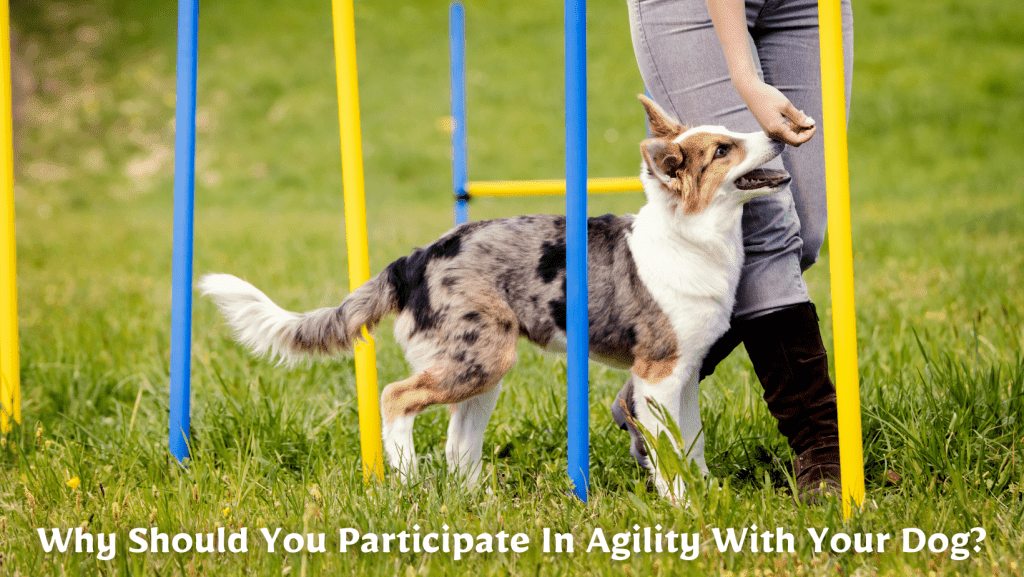
There are many benefits to participating in dog agility with your dog. These benefits include:
Physical Exercise – Dog agility provides a great source of physical exercise for dogs. The obstacles on the course require dogs to run, jump, crawl, and balance, which helps to improve their physical fitness and agility. Regular agility training can also help to prevent obesity and reduce the risk of certain health problems.
Mental Stimulation – Agility training is also great for a dog’s mental wellbeing. The obstacle course provides mental stimulation and helps to keep a dog’s mind active and engaged. This can help to prevent boredom and reduce destructive behavior.
Strengthening the Bond – Agility training is a great way for dog owners to bond with their furry friends. The handler is responsible for guiding the dog through the course, and working together as a team can help to strengthen the bond between the handler and the dog.
Fun and Exciting – Agility training can be a lot of fun for both the handler and the dog. Dogs love the challenge of navigating through the obstacle course, and handlers enjoy cheering their dogs on and watching them succeed.
Improved Obedience – Agility training requires a dog to respond to commands and follow their handler’s lead. This can help to improve a dog’s obedience and overall behavior. It also provides an opportunity for dog owners to reinforce positive behavior and reinforce obedience training.
But, it’s not only good for dogs, participating in dog agility is also good for you (the handler).
What are the benefits of Dog Agility for the Handler?
Here are some reasons why dog agility is so good for dog owners and why you should consider giving it a try:
Bonding Experience – Agility training is a great opportunity for dog owners to bond with their furry friends. The handler is responsible for guiding the dog through the course, and working together as a team can help to strengthen the bond between the handler and the dog.
Physical Exercise – Agility training can also provide a great source of physical exercise for dog owners. The handler is usually required to run along with their dog and may even have to perform some of the obstacles themselves. This can help to improve their physical fitness and provide a fun way to get active.
Mental Stimulation – Just like dogs, agility training can provide mental stimulation for dog owners. The challenge of navigating the obstacle course and working with their dog can help to keep the handler’s mind active and engaged.
Opportunity to Meet New People – Agility training is a great way to meet new people who share a love of dogs. Many agility classes and events provide an opportunity for dog owners to socialize and connect with others who share their interests.
Improving Training Skills – Agility training can also help dog owners to improve their training skills. The handler is responsible for guiding the dog through the course, and the experience can help to reinforce positive training techniques and improve overall communication between the handler and the dog.
Can Anyone Participate In Dog Agility With Their Dog?
Dog agility is a sport that is open to anyone who has a dog and an interest in participating. It is a fun and exciting activity that can be enjoyed by people of all ages and skill levels, and can be done with dogs of all breeds and sizes.
One of the great things about dog agility is that it is a sport that can be tailored to suit the abilities of both the handler and the dog. There are different levels of difficulty, from beginner to advanced, and handlers and dogs can progress at their own pace.
For beginners, there are introductory classes that provide a basic understanding of the sport and the obstacles. These classes can help handlers and dogs learn the basics and build a foundation for more advanced training.
For more experienced handlers and dogs, there are advanced training classes and competitions that offer more challenging courses and obstacles. These classes can help handlers and dogs improve their skills and prepare for competitions.
In addition to classes, there are also many dog agility clubs and organizations that host events and competitions, which provide opportunities for handlers and dogs to compete against other teams.
Overall, dog agility is a sport that is open to anyone who has a dog and an interest in participating. Whether you’re a beginner or an experienced handler, there are opportunities for you and your dog to learn, grow, and have fun together.
Are Male Or Female Dogs Better At Agility?
Dog agility is a sport that involves guiding a dog through an obstacle course in the quickest and most accurate way possible. One question that often arises among dog owners is whether male or female dogs are better at agility. In this blog post, we’ll explore the debate and provide some insights into what factors might influence a dog’s ability to excel in agility.
No Gender Bias It is important to note that there is no gender bias in dog agility. Both male and female dogs can excel in the sport, and success in agility is determined by a variety of factors, including training, breed, and individual temperament.
Physical Differences There are some physical differences between male and female dogs that can impact their ability to perform certain agility obstacles. For example, male dogs are often larger and stronger than female dogs, which can make them better suited for some obstacles that require a lot of jumping and landing. On the other hand, female dogs may be more agile and have better balance, which can help them to excel on more delicate obstacles.
Temperament and Drive Temperament and drive are also important factors that can influence a dog’s ability to excel in agility. Some dogs have a natural drive to perform and a willingness to work, which can make them well-suited for the sport. Others may be more timid or less motivated, which can make it more challenging for them to excel in agility.
Training and Experience Ultimately, a dog’s success in agility will be determined by their training and experience. A well-trained and experienced dog is more likely to excel in the sport, regardless of their gender.
Can Any Breed Do Agility?
Yes, any breed of dog can participate in agility, provided they are physically and mentally capable of performing the obstacles. Some breeds, such as Border Collies and Australian Shepherds, have a natural drive and enthusiasm for agility and are often used as agility competitors. However, smaller breeds, such as Chihuahuas and Pomeranians, can also excel in agility, and many dogs that were not bred for the sport have gone on to achieve great success.
Before starting agility training, it’s important to consult with a veterinarian to determine if it’s appropriate for your dog. Some dogs may have physical limitations, such as joint problems or a fear of heights, that could prevent them from participating in the sport. It’s also important to start with basic obstacles and build up your dog’s confidence gradually. With the right training and preparation, any breed of dog can enjoy and excel in agility.
What Is The Best Dog For Agility?
There is no one “best” breed for agility as success in agility is determined by a variety of factors, including the individual dog’s training, drive, and temperament. However, certain breeds are often associated with success in the sport, such as:
- Border Collie: These dogs are highly intelligent, energetic, and have a natural drive to work. They are often used as agility competitors.
- Australian Shepherd: These dogs are also highly intelligent, energetic, and have a natural drive to work. They are often used as agility competitors.
- Jack Russell Terrier: These dogs are small, energetic, and have a natural drive to perform. They are well-suited for agility due to their quick reflexes and agility.
- Shetland Sheepdog: These dogs are intelligent, quick, and agile. They have a natural drive to work and perform well in agility.
- Labrador Retriever: These dogs are intelligent, friendly, and have a lot of energy. They are well-suited for agility due to their drive to work and their natural athletic ability.
However, it’s important to keep in mind that any breed of dog can participate in agility, provided they are physically and mentally capable of performing the obstacles. With the right training and preparation, any breed of dog can enjoy and excel in the sport.
What To Look For In A Dog Agility Trainer?
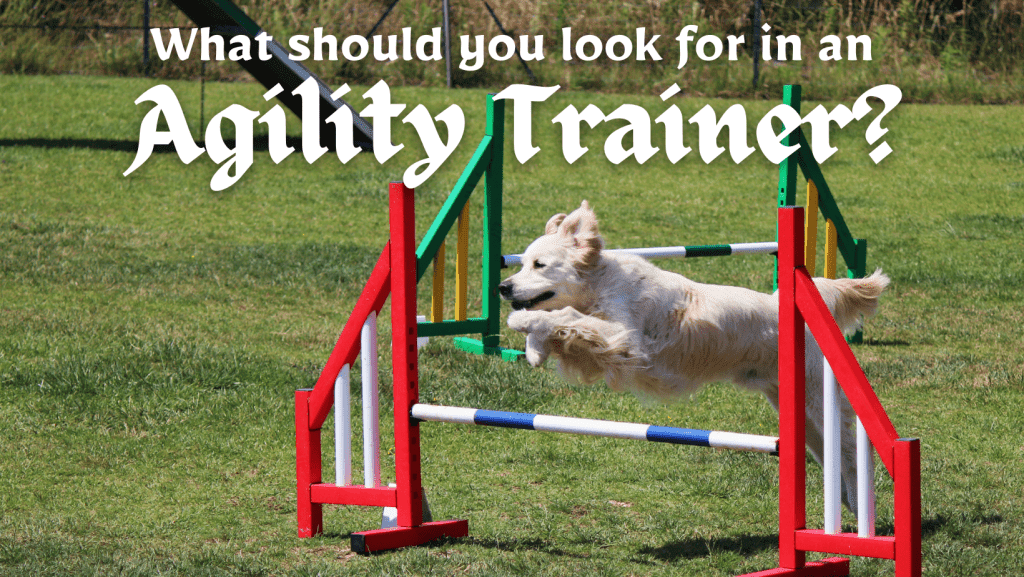
When looking for a dog agility trainer, it is important to consider the following factors:
- Experience and qualifications: Look for a trainer who has experience training dogs in agility and who has the appropriate qualifications and certifications. The more experience and knowledge the trainer has, the better equipped they will be to help you and your dog succeed in the sport.
- Teaching style: Observe how the trainer interacts with the dogs and handlers in their classes. Look for a trainer who uses positive reinforcement techniques and who is patient and understanding. A trainer who is kind, patient and uses humane methods will be beneficial for both dog and owner.
- Safety: Safety should be a top priority for any agility trainer. Look for a trainer who follows proper safety protocols and who is knowledgeable about the risks and hazards associated with the sport.
- Communication: A good agility trainer should be able to clearly communicate with both the dog and the owner. They should be able to explain the training techniques in a way that is easy to understand and should be able to provide constructive feedback and guidance.
- Availability: Consider the trainer’s availability and schedule. Look for a trainer who offers classes at convenient times and who is able to accommodate your schedule.
- Customization : Every dog is different, and a good trainer should be able to assess the strengths and weaknesses of your dog and tailor the training to suit their needs.
- Professionalism: Look for a trainer who is professional, reliable and responsive. They should be punctual and organized, and should be able to answer any questions you may have about the sport and the training.
- Testimonials: Look for testimonials from other dog owners who have trained with the trainer. This can give you an idea of the trainer’s reputation and the experiences of others with their methods.
Ultimately, it is important to find a trainer who is a good match for you and your dog, and who can help you achieve your goals in agility.
In conclusion, dog agility is a sport that can be enjoyed by anyone who has a dog and an interest in participating. It offers a wide range of benefits, including physical exercise, mental stimulation, bonding, training, and fun. With different levels of difficulty and various opportunities for training and competition, dog agility is a sport that can be tailored to suit the abilities of both the handler and the dog. Whether you’re a beginner or an experienced handler, there are opportunities for you and your dog to learn, grow, and have fun together. Remember to always prioritize safety and to find a coach that uses humane methods, and you and your dog will be on your way to an enjoyable and fulfilling experience. Don’t hesitate to reach out to local clubs and organizations for more information on training and events in your area. Happy training!



